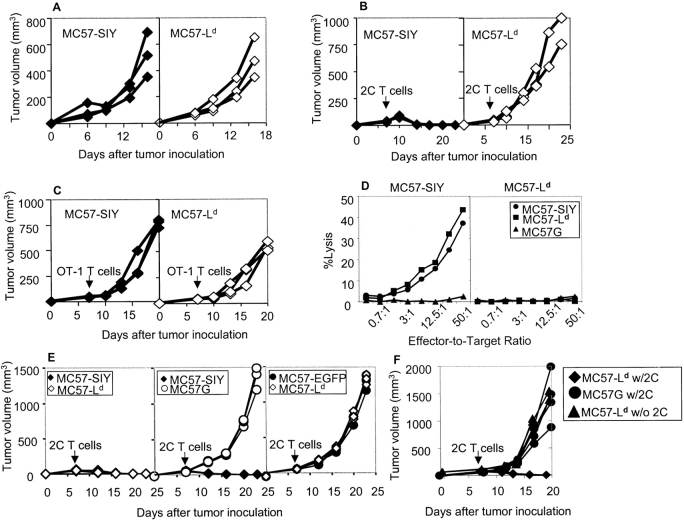Figure 2.
MC57-SIY but not MC57-Ld tumors were rejected by naive 2C T cells. MC57 tumors were inoculated to CD8-deficient mice. 7–9 × 105 2C, OT-1, or no T cells as indicated were transferred into these mice 1 wk after tumor injection. (A) MC57-SIY and MC57-Ld both grew progressively in CD8-deficient mice. (B) Adoptively transferred 2C T cells rejected MC57-SIY but not MC57-Ld. (C) Both MC57-SIY and MC57-Ld grew progressively in the presence of OT-1 T cells. (D) CTL from MC57-SIY–challenged mice lysed both MC57-SIY and MC57-Ld equally well in 51Cr release assay. However, CTL from MC57-Ld–challenged mice lysed neither. (E) MC57-SIY and MC57-Ld tumors were inoculated to each flank of the same mouse. As controls, MC57-SIY and MC57G, or MC57-EGFP and MC57-Ld, were inoculated the same way to the mouse. MC57-Ld tumors were rejected by 2C T cells in the presence of MC57-SIY. MC57G grew progressively when MC57-SIY tumors on the same mouse were rejected by 2C T cells. MC57-EGFP and MC57-Ld both grew in the presence of 2C T cells. (F) MC57-Ld tumors were rejected when 2C T cells were primed by intrasplenic injection of 106 MC57-Ld cancer cells.

